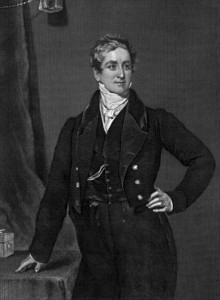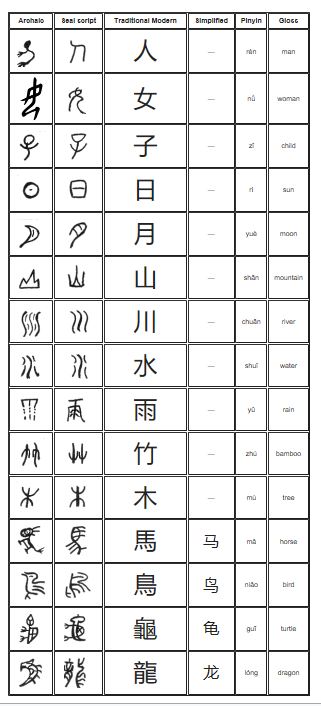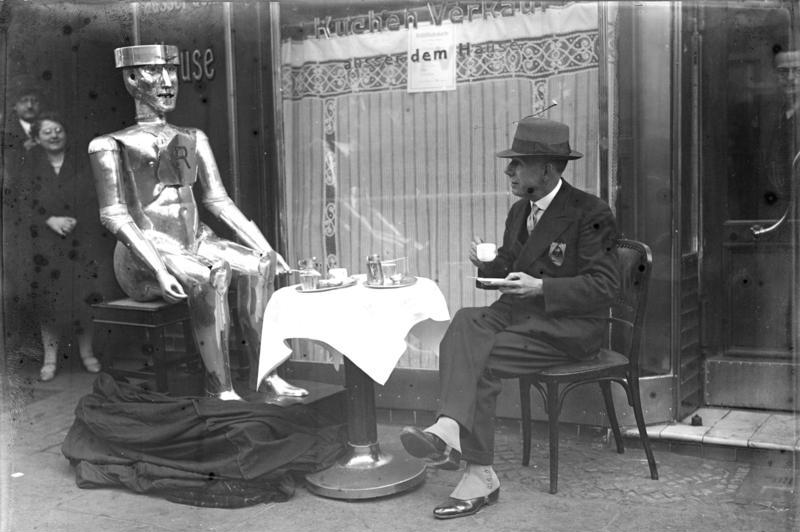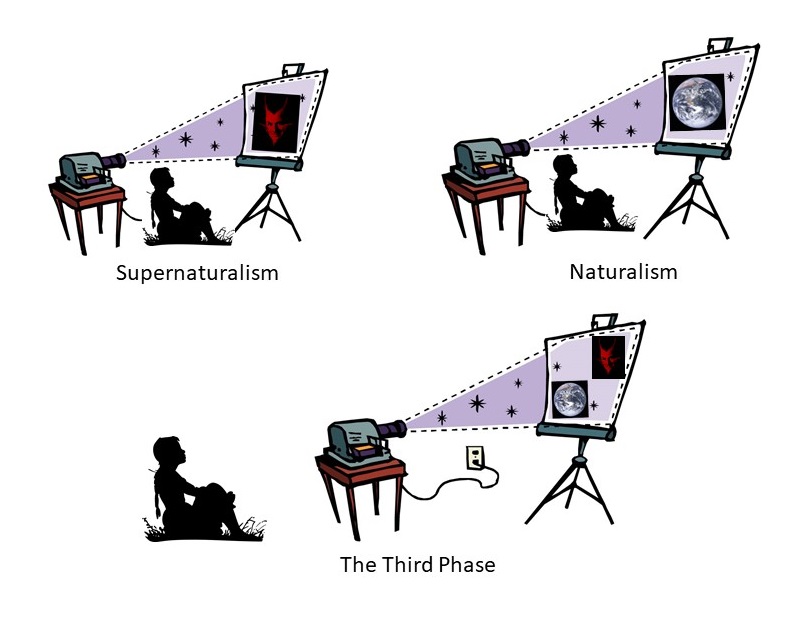It took me completely by surprise to see two men armed with semi-automatic weapons heading straight towards me.
Of course that opening sentence – although true – is a deliberate attempt to grab your attention. I hope I don’t lose you by revealing further details: the two men were Authorised Firearms Officers of the Hampshire Constabulary on patrol in Winchester city centre. It was just by chance that I happened to be walking towards them with my family on a sunny summer Sunday afternoon.
 So it would seem that there ends the story, except… as our paths crossed I took a closer look at the gun of the nearest officer. The weapon’s magazine was made of a translucent material, and I could see the individual rounds within. And it struck me that it was possible that one or more of those bullets could be shot into me or my wife or my son, probably causing fatal damage. In the short time it took before my slow-thinking processes dismissed the idea as totally far-fetched, I felt my blood run cold.
So it would seem that there ends the story, except… as our paths crossed I took a closer look at the gun of the nearest officer. The weapon’s magazine was made of a translucent material, and I could see the individual rounds within. And it struck me that it was possible that one or more of those bullets could be shot into me or my wife or my son, probably causing fatal damage. In the short time it took before my slow-thinking processes dismissed the idea as totally far-fetched, I felt my blood run cold.
Anyway, this short experience at the weekend led to certain lines of thinking: How flimsy is the barrier that separates the living me from the horror of a sudden, violent, mechanised death? How it has come to pass that some people can walk down Winchester high street on a Sunday afternoon carrying semi-automatic rifles, and others can’t? And, of course, what has all this got to do with the Middle Way?
I can supply a little more background information here, especially for any readers from outside the UK. In Great Britain police officers are not routinely armed and the public are, with a few exceptions, not permitted to carry firearms. I have seen British police officers armed with similar weapons before, but this was in high security locations such as Whitehall in London, or at Heathrow Airport. In contrast, the city of Winchester, where I crossed paths with these armed officers, was last year proclaimed ‘the best place to live in the UK’ due to its high employment, good wages, low crime and above average health and life expectancy. I assume they were patrolling as a kind of reassurance to locals and tourists that any acts of terrorism would not go unchecked, in the wake of recent atrocities in Manchester and London.
This paragraph from Chapter 6 of Robert M. Ellis’s book “Middle Way Philosophy 2: The Integration of Desire” helps set the tone for any discussion of policing in terms of the Middle Way:
“The state’s responsibility, then, is to support the integration of desires by preventing the grossest expressions of conflict – those which would create an environment in which further integration is impossible. [… O]ur environment needs to strike a balance between security and challenge in order to prevent the arising of unintegrated desires, but that means that a basic level of security needs to be created by government. In order to do this it is obliged to use force to suppress those who would perpetrate conflict by violence or other coercion.”
 So these armed police officers were one of the means by which the government ensures a basic level of security, so that I can, for example, feel free to walk up Winchester high street (pictured on the right) on a Sunday afternoon without needing to carry arms myself. If there were any people in the city centre who intended to perpetrate conflict by violence, or the threat of violence, then I would reasonably assume that these armed officers would use (possibly lethal) force in order to suppress them. In this way I am able to continue my business of becoming a more integrated human being.
So these armed police officers were one of the means by which the government ensures a basic level of security, so that I can, for example, feel free to walk up Winchester high street (pictured on the right) on a Sunday afternoon without needing to carry arms myself. If there were any people in the city centre who intended to perpetrate conflict by violence, or the threat of violence, then I would reasonably assume that these armed officers would use (possibly lethal) force in order to suppress them. In this way I am able to continue my business of becoming a more integrated human being.
I have little appetite for physical violence. I actively avoid it, and I certainly don’t have the physique or the weaponry to excel at it. I’m sufficiently appalled by the violence inherent in the food industry that I choose to eat a strict vegetarian diet. But if I tried to make the principle of non-harm an absolute – thou shalt not kill, ever (even if you’re a police officer) – then it isn’t workable, it doesn’t address conditions in which there are people who are willing to perpetrate conflict by use of lethal force.
A very similar sentiment was expressed (perhaps more bluntly) by Brad Warner in a blog post in March this year. He put it like this:
“Human beings are fair and inclusive, when we have the resources to be. This ability to be fair and inclusive has a high price. A society that values fairness and inclusivity also has to be able to defend fairness and inclusivity. It has to be able to kick the shit out of those who threaten fairness and inclusivity.
I’m not saying this is a good thing. But it is a fact. I hope this is not always the case. I believe that someday, in the distant future, when neither I nor anyone else alive here in the year 2017 is around any longer, it is possible that this will not be the case.
But we will never get to that point unless we understand the real situation right now. Which is that if we want a fair and inclusive society (and I do), we need to employ people whose job it is to kill — or at least have the capacity and willingness to kill — other human beings who threaten fairness and inclusivity.
In short, monks need soldiers.“
So who are these people who have the capacity and willingness to kill on my behalf? I don’t mean this personally, I’m not questioning the virtue of individual officers – in fact two of my good friends from teenage years are now police officers, one of them a firearms officer, and I’m satisfied that both are competent and ethical individuals. I ask what is their status, and what do we have in common and what separates us?
The idea (in the UK, and many other nations) is that these people are citizens in uniform, rather than soldiers: their primary principle is to prevent crime and disorder, as an alternative to their repression by military force and severity of legal punishment. The soldiers mentioned above by Brad Warner are probably more relevant to conflicts between nation states. Note that the capacity and willingness to kill is part of a preventative process, which, if it is effective, is far preferable to resorting to repression by military force. The ideal is that in the act of prevention all citizens (uniformed and un-uniformed) are better able to maintain their integrity than would be the case during any after-the-fact violence.
 When I say that this is their primary principle, I’m referring to the so-called Peelian Principles which were set out in the ‘General Instructions’ that were issued to every new police officer from 1829. [N.B. The Peelian Principles were named after Sir Robert Peel (illustrated on the right) but apparently there is no evidence of any link to Robert Peel and the principles were likely devised by the first Commissioners of Police of the Metropolis, Charles Rowan and Richard Mayne]. This kind of policing is known as ‘policing by consent’ because the power of the police is supposed to come from the common consent of the public, as opposed to the power of the state. However there is the important corollary that no individual can chose to withdraw his or her consent from the police, or from a law.
When I say that this is their primary principle, I’m referring to the so-called Peelian Principles which were set out in the ‘General Instructions’ that were issued to every new police officer from 1829. [N.B. The Peelian Principles were named after Sir Robert Peel (illustrated on the right) but apparently there is no evidence of any link to Robert Peel and the principles were likely devised by the first Commissioners of Police of the Metropolis, Charles Rowan and Richard Mayne]. This kind of policing is known as ‘policing by consent’ because the power of the police is supposed to come from the common consent of the public, as opposed to the power of the state. However there is the important corollary that no individual can chose to withdraw his or her consent from the police, or from a law.
If you’ve not come across them before, I recommend that you make the effort to find out more about them. I hadn’t heard of them until earlier this year, but when I started looking into them they made a lot of sense and helped to make more concrete the vague ideas I’d developed about the principles of policing in the UK. It has also changed they way in which I relate to police officers – which has been increasingly helpful as I’ve continued to get older and the police officers get ever younger.
The issue of public consent is elaborated further in principles 2, 3 and 4. Specifically, the fourth stated principle is
“To recognise always that the extent to which the co-operation of the public can be secured diminishes proportionately the necessity of the use of physical force and compulsion for achieving police objectives.“
So in my Sunday afternoon example, if I (a member of the public) see police officers carrying lethal weaponry, but refraining from using it because the situation does not call for it, then I am more likely to approve of their presence. It is not just for safety’s sake that they carry their weapons with the muzzle pointing towards the ground. The authority of the armed officers is not supposed to stem from the fact that they are armed, but because the public approves of the way that they conduct themselves whilst armed in the broader context of preventing crime and maintaining order.
There’s another issue involved in police officers being armed so that the rest of us don’t have to be: armed officers put themselves at greater risk of being harmed in the course of their duty of protecting other citizens from harm. This ‘ready offering of individual sacrifice’ is also mentioned in the fifth Peelian principle.
The sixth principle involves addressing conditions in an incremental way:
“To use physical force only when the exercise of persuasion, advice and warning is found to be insufficient to obtain public co-operation to an extent necessary to secure observance of law or to restore order, and to use only the minimum degree of physical force which is necessary on any particular occasion for achieving a police objective.”
Again, the idea being that public consent will be maintained if police officers do their duty in an even-handed and proportionate fashion – and their duty does not extend to avenging individuals or the State, nor does it include judging guilt and issuing punishments (as it says in the eighth principle). The sixth principle urges the use of physical force only to the extent that it is necessary to address the specific conditions of a situation.
In conclusion, then, I’m reasonably satisfied that the Peelian Principles of ‘policing by consent’ are compatible with the Middle Way, and that only political extremists are likely to reject them as being a sound ethical foundation on which to organise the maintenance of civil society. The big issue, as ever, is to what extent the Peelian Principles are actually realised in the way that policing is carried out in practice. In my privileged (and compliant) position in society I’m pretty unlikely to find myself on the wrong end of an armed officer’s gun, so perhaps my role is more as a protector of the standing of the Peelian Principles. As I see the Principles as a valuable working system then I should speak out if I see them being flouted by corrupt individuals or being undermined or perverted or otherwise absolutised by political figures. What do you think?
Image credits
- Photograph of Merseyside Armed Police by Terry Kearney from flickr.com [Licence: CC BY-NC 2.0]
- Photograph of Winchester High Street by Peter 2010 from flickr.com [Licence: CC BY 2.0]
- Portrait of Sir Robert Peel, 2nd Baronet (1788–1850), former Prime Minister of the United Kingdom, dowloaded from wikimedia commons [Licence: Public Domain]
Further fodder for consideration
- NBC news article London Bridge Attack: Why Most U.K. Police Don’t Carry Guns from 3 June 2017. Interesting for a USA perspective on UK policing.
- Anonymous article in the Guardian When I joined the police, I resolved never to carry a gun. But I’ve changed my mind, also from 3 June 2017.
- BBC news article Does the presence of armed police reassure people? from 12 December 2016.


 on the left is the character for ‘mouth’ (kou), which looks a bit like a mouth except that it’s been squared off; on the right the
on the left is the character for ‘mouth’ (kou), which looks a bit like a mouth except that it’s been squared off; on the right the








